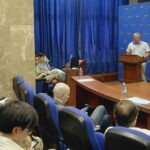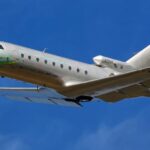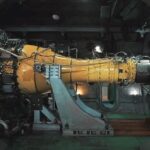In February 2021 at the airfield of the Siberian Research Institute of Aviation named after Chaplygin the stage of ground testing of the flying laboratory based on the Yak-40 aircraft with a demonstrator of hybrid power plant equipped with an electric motor on high-temperature superconductors (HTS), which is being developed by the Central Institute of Aviation Engineering named after Baranov in partnership with SibNIA.
After ground testing which confirmed the engine stable operation with all the aircraft systems, Yak-40LL passed the flight tests and in July the flying laboratory was demonstrated at MAKS-2021, where a demonstration flight was performed. After the air show, the aircraft returned to Novosibirsk to SibNIIA base for further testing. Currently, the demonstrator is being finalized and in the second half of 2022 will be again installed on the flying laboratory. The three-year research work “Electrolight SU-2020” will be completed at the end of the year.
CIAM’s plans for 2022 include the start of work on the creation of GSU with a multiple of a higher power – 1.5-2.0 mW. Its peculiarity will be the use of not only more powerful drive on the basis of VK-2500 engine, but also the use of liquid hydrogen as fuel and coolant. As the temperature drops, the power of HTS electric machines practically triples while maintaining their mass-size characteristics.
According to the representative of the CIAM, the work on the hydrogen hybrid propulsion systems will follow a well-established scheme: creation of a ground demonstrator, a set of ground tests on the stands, then installation on a flying laboratory for the passage of ground experiments and subsequent preparation for the implementation of the first flights. Given the complexity of engineering tasks, the entire project is designed for a period of up to five years.
Elements of a hybrid power plant inside the Yak-40LL. Photo from the site of the Advanced Research Foundation
Two energy sources – fuel cells and the electric generator driven by the VK-2500 turboshaft gas-turbine engine – will be used in the gas-hydrogen hybrid propulsion system. A fuel cell has a high efficiency in almost the entire range of operation modes, but its specific mass is several times greater than that of a gas turbine engine. For this reason it is not suitable as the main source of energy and will be used only in those modes when additional power is required.
Along with the use of alternative fuels, hybridization is one of the defining trends in aviation. The advantage of hybrid propulsion systems, primarily for small and regional aircraft, is the possibility, on the one hand, to benefit from energy-efficient, environmentally friendly electric technologies, on the other hand, to maintain acceptable weight efficiency by optimizing the design and operating modes of gas-turbine or piston aircraft engines.
After the completion of these R&D Russia will closely approach the opening of R&D on creation of a line of hybrid and electric propulsion systems for aircraft with dimensions from 1 to 100 seats, including promising aircraft of new shapes: multirotor type, convertorcraft, vertical takeoff and landing (aero cab) and others.







